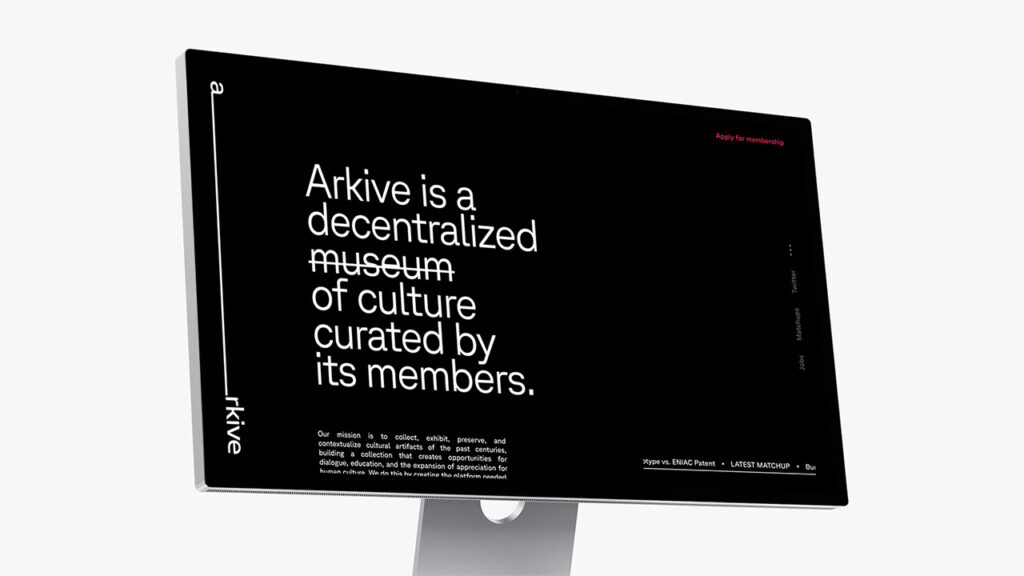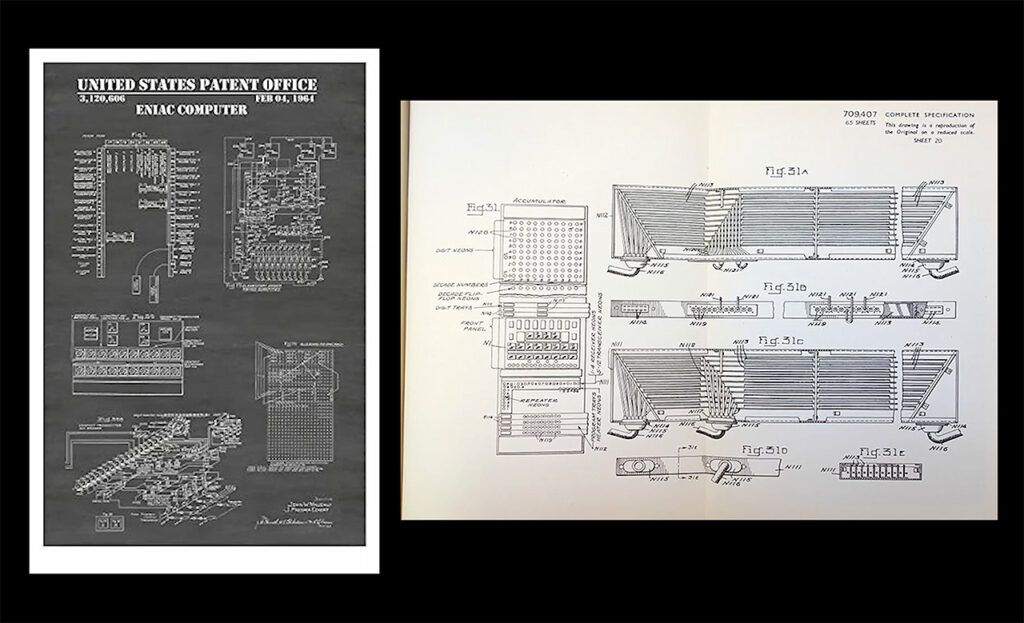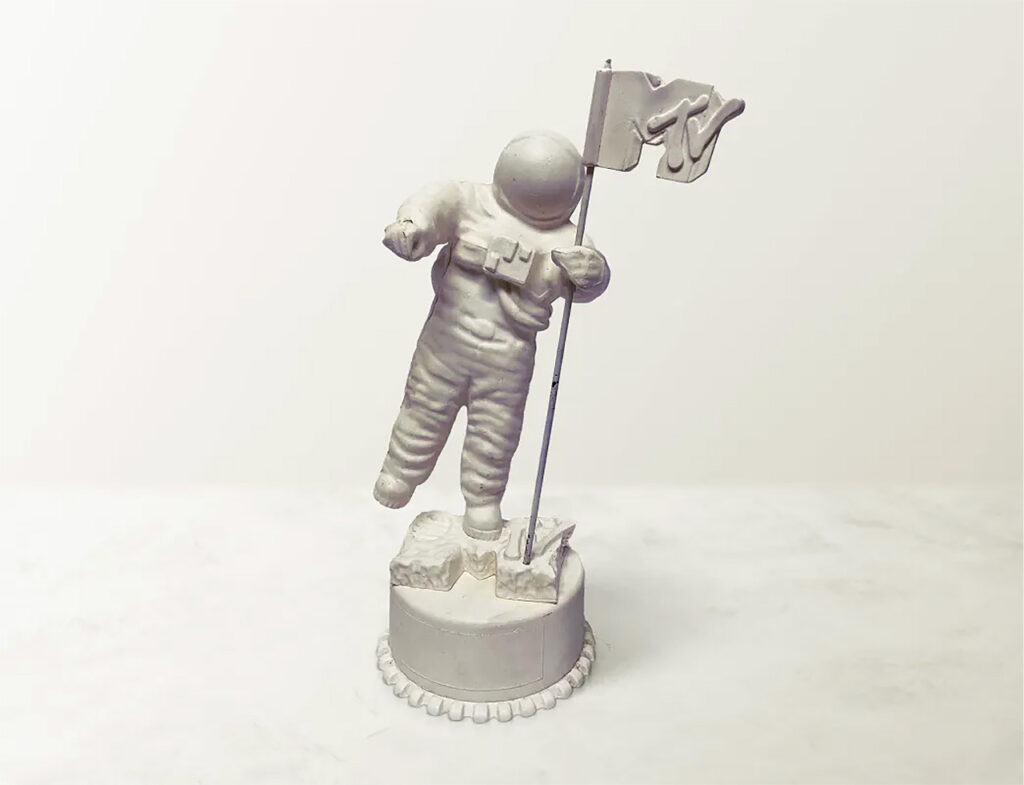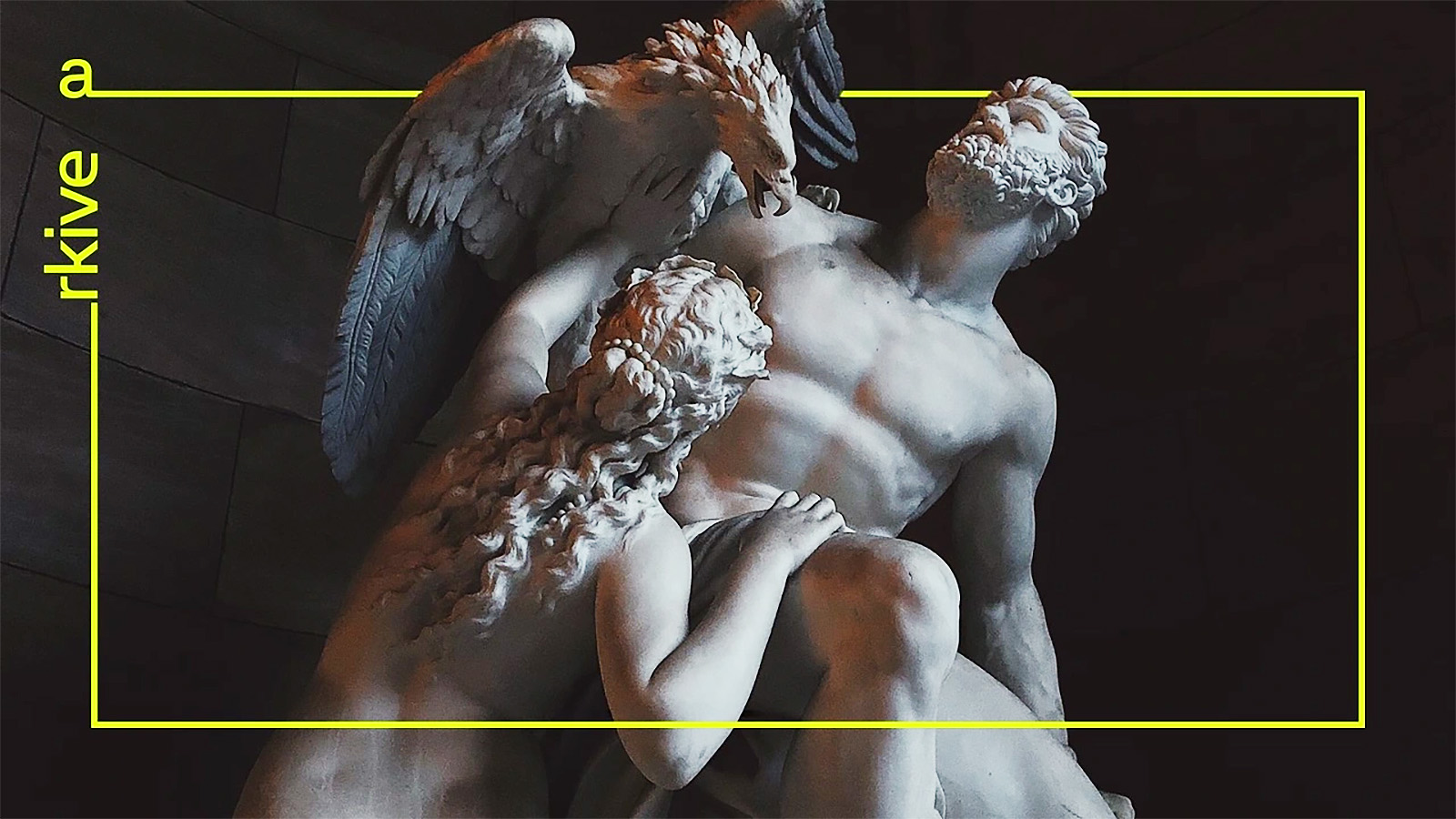The moment has come for a decentralized museum. In between the Great Digital Pivot, when community outreach came into focus for institutions, and the Year of the NFT, where the blockchain arrived to the fore, it’s been, in Tom McLeod’s words, “kind of a perfect storm.” But rather than attempt to build decentralization into an existing cultural structure, the entrepreneur is eying something bolder: building a museum on decentralization.
Earlier this month, having closed a $9.7 million seed round, McLeod unveiled Arkive, a museum whose collection and curation — and potentially, physical location — rests in the hands of its members. This “down-up” model will determine the culturally significant items that will enter the museum’s collection, effectively empowering its community with a voice and a vote. “This is an opportunity right now when the world is flattening,” says the Founder of Arkive, “when people are focused on placing things in positions of maximum impact and utilizing the power of the internet and blockchain.”

Arkive’s collection and curation will be determined by its community members, who get to vote on what the museum acquires and where its objects are displayed. Image: Arkive
Already, for its first curatorial season centered on game-changing technology, Arkive’s community has voted in early acquisitions, including the 1954 patent for ENIAC, the world’s first general-purpose computer, and a vintage print of Lynn Hershman Leeson’s “Seduction,” part of her 1985 Phantom Limb series. A prototype of MTV Video Music Awards’ Moonman trophy is the latest to join the collection. The history of these items will eventually be minted into NFTs to manage provenance, quality, and authentication on-chain.
Currently, Arkive’s community numbers 250 members, with 1,000-plus people on the waitlist — making plain the appeal of the project to the wider public. “I think a lot of times, blockchain projects or ideas are in search of a market. In this case, we actually have a pretty clear market,” McLeod says. That market happens to be made up of individuals who, despite their particular expertise or cultural enthusiasms, remain left out of institutional conversations. Granting them roles in decision-making in a museum also means Arkive is benefitting from the wisdom of a collective, assembling a collection that is by, for, and thus, mirrors a community.

The 1954 patent for the ENIAC general-purpose computer was Arkive’s first acquisition, beating out Jake Burton’s 1979 snowboard prototype. Image: Arkive
Arkive is now gaming out its first exhibition at Art Basel Miami Beach in December, but for now, is hoping to loan its holdings to relevant museums. The ENIAC patent, for example, could land in the Computer History Museum, while the Moonman travels to a pop culture-centric institution — decisions that will of course be put to a vote. As always, the point is “maximum impact” such that these objects can be seen by many, as opposed to being locked up in storage. In yet another decentralized move, the collection, notes McLeod, will be “out in the world.” He expands on Arkive’s greater project below.
What does a museum mean to you?
Broadly, I think the overarching goal of any museum is to focus on showing items of impact and cultural significance to the widest amount of people. It should have an opinion, it should take a stance, it should curate and focus on defining moments in time or moments of impact.
How do you see the blockchain helping Arkive to meet its mission?
There’s two things blockchain currently does really well: it allows the financialization of objects and then to fractionalize that as well. And it does all of that transparently. So when we look at this, that’s an opportunity on our end to be very clear with folks on what’s happening at any given time with where stuff is and where it’s going. Couple that with the ability to start bridging physical assets on-chain, it’s about as good of a use case as any.

Lynn Hershman Leeson’s “Seduction” was voted into Arkive’s collection with one member viewing it as “the marker of a moment in time… at the precipice of the internet and when humans & technology started to become one.” Image: Arkive
What goes into Arkive’s selection or voting process?
One of the things we realized early on is that if you just say to the world, “Here’s an infinite amount of options,” that’s actually too hard to make decisions. So our community gets presented with options that have been pulled out and secured. We work with galleries and private buyers, and then the members choose between usually two items every month, with an entire presentation on each before people start voting. Think of it almost like a baby debate team where people are getting really into why this is more impactful or why this ties more to the theme.
We believe the process is pretty scalable. You just start to get more and more people that are focused on specific verticals — fine art, film and TV memorabilia, design, vintage cars. I hope that segmentation also starts to focus on areas like emerging artists, or around specific groups of people or locations.
How does the acquisition side of things play out?
We’re only acquiring the objects that get voted on. We’re not going to auction like Constitution DAO and Spice DAO; we’re attempting to avoid that anytime we can. We don’t even announce until we have signed 90 or 120-day holds with buyers, galleries, or the initial owners.

The prototype of the Moonman trophy, designed by Pat Gorman, is the first pop culture object to enter Arkive’s collection. Image: Arkive
Might a physical Arkive museum be on the horizon?
There was a moment where people were very excited about a physical location; over time, we’ve really evolved. I’m not sure the world needs some tech guy to create another museum, frankly. I think we can maximize the impact of the community by supporting existing institutions and putting amazing stuff in their locations.
So how do you envision Arkive’s collection living in the world?
I do think this ends up looking sort of like Pokémon Go, where objects are all over museums in the world. You land in Seoul, Oslo, or New York, you open up the Arkive app, and whether you’re a member or not, you can access tours of interesting objects that have been curated by our community through geographic mapping. That would be how I would want to view the city.
I spent my previous career launching a lot of mobile apps, and I think the most successful apps were those that took advantage of the uniqueness of having a computer in your pocket. They took advantage of the camera, GPS, messaging, and location. I think the future of that for us would be innovating around some of those same strengths: How can we use having the museum in your pocket at all times to give you this layer on top of the physical world to go view culture? I’d want to double down on that.



